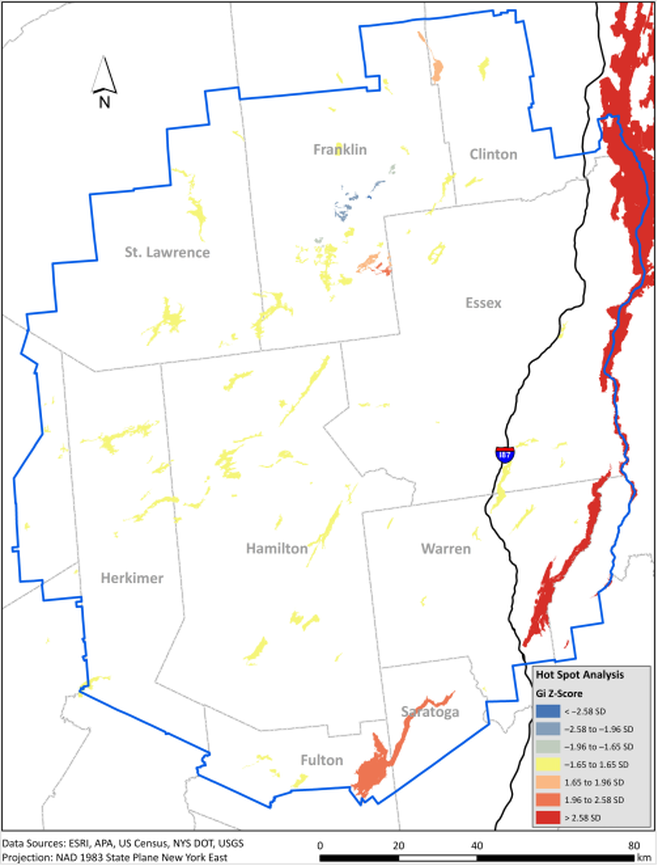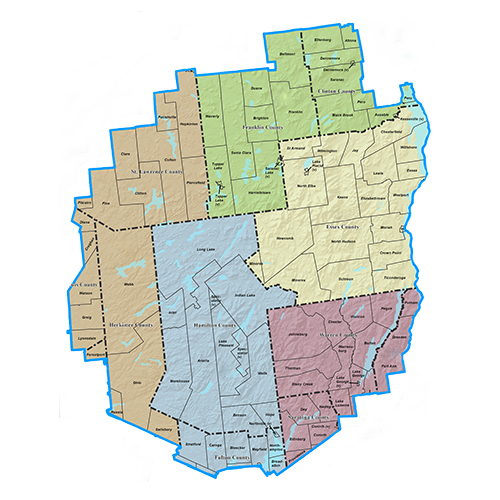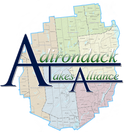Dear Partners,
APIPP’s Aquatic Invasive Species Project (AIS) Coordinator, Erin Vennie-Vollrath, collaborated with Dr. Richard Shaker of Ryerson University and others to publish “Predicting aquatic invasion in Adirondack lakes: a spatial analysis of lake and landscape characteristics” in the journal, Ecosphere. The study examines the distribution of AIS across 126 Adirondack lakes and evaluates relationships with lake and landscape characteristics to identify invasion “hot & cold spots” and the strongest predictors of lake invasion. In summary, the study identified 4 invasion hot spots and one cold spot (see map below). Deep lakes, especially those high in elevation, had the lowest likelihood of invasion while those with high percentages of urban land cover (proxy for disturbance and recreational draw) that were close to the I-87 Northway (primary conduit of overland AIS transport into the ADK’s) had the highest likelihood. Lakes with motorized access and a high abundance of game fish (proxy for lake productivity and recreational draw) also had an increased probability of being invaded. Based on this analysis, the study prioritizes 20 uninvaded lakes having the highest vulnerability to invasion for APIPP’s future AIS prevention and monitoring efforts.
This analysis used data collected over the past 15 years by APIPP’s volunteer lake monitors and partners.
Congratulations to Erin, Dr. Shaker and the collaborating authors on a great study!
Sincerely,
Brendan Quirion
Adirondack Invasive Species
Program Manager
APIPP’s Aquatic Invasive Species Project (AIS) Coordinator, Erin Vennie-Vollrath, collaborated with Dr. Richard Shaker of Ryerson University and others to publish “Predicting aquatic invasion in Adirondack lakes: a spatial analysis of lake and landscape characteristics” in the journal, Ecosphere. The study examines the distribution of AIS across 126 Adirondack lakes and evaluates relationships with lake and landscape characteristics to identify invasion “hot & cold spots” and the strongest predictors of lake invasion. In summary, the study identified 4 invasion hot spots and one cold spot (see map below). Deep lakes, especially those high in elevation, had the lowest likelihood of invasion while those with high percentages of urban land cover (proxy for disturbance and recreational draw) that were close to the I-87 Northway (primary conduit of overland AIS transport into the ADK’s) had the highest likelihood. Lakes with motorized access and a high abundance of game fish (proxy for lake productivity and recreational draw) also had an increased probability of being invaded. Based on this analysis, the study prioritizes 20 uninvaded lakes having the highest vulnerability to invasion for APIPP’s future AIS prevention and monitoring efforts.
This analysis used data collected over the past 15 years by APIPP’s volunteer lake monitors and partners.
Congratulations to Erin, Dr. Shaker and the collaborating authors on a great study!
Sincerely,
Brendan Quirion
Adirondack Invasive Species
Program Manager



 RSS Feed
RSS Feed
